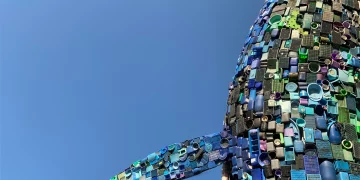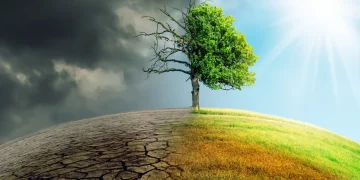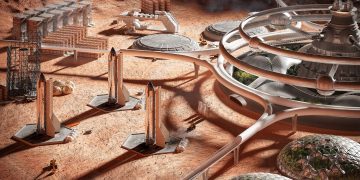The world of art, ever-evolving and deeply intertwined with cultural shifts, technological advancements, and individual expression, finds itself on the cusp of a transformative era. From digital media to virtual reality and AI-assisted creativity, the landscape of contemporary art is experiencing an exciting renaissance, where traditional forms and cutting-edge innovations meet in unexpected ways. The “horizon” of innovation in the arts today is not just a boundary to be crossed but an expansive space of possibilities where imagination and technology collaborate to create new forms of expression.
The Intersection of Tradition and Technology
Art has always been a mirror of the times, reflecting the social, political, and technological contexts in which it is created. In the 21st century, digital technology is reshaping how art is made, experienced, and consumed. However, innovation in the arts does not necessarily mean abandoning the old in favor of the new; rather, it’s about synthesizing the old with the new in exciting ways.
One of the most striking examples of this blending of tradition and technology is the rise of digital painting and 3D modeling, where traditional techniques such as oil painting or sculpture can be digitally rendered and manipulated. Artists like Refik Anadol use machine learning to create intricate, dynamic visual experiences that blend painting, architecture, and data visualization. These works are not confined to a canvas or gallery but extend into public spaces, furthering the boundary between traditional art and immersive digital experiences.
The art world has also embraced artificial intelligence. AI-generated art challenges the very notion of authorship and originality. Algorithms can now produce intricate works of art, often so sophisticated that they are indistinguishable from pieces created by human hands. Artists such as Mario Klingemann and Robbie Barrat have experimented with neural networks, creating art that opens new dialogues about creativity and the role of the artist in the digital age.
However, AI’s role in art is not solely about replacing human input. Rather, it enhances the artist’s vision by providing new tools for expression. By analyzing large data sets, AI systems can suggest new creative directions or even push an artist’s work into unexpected, uncharted territories. The collaboration between human intuition and machine learning is one of the most promising frontiers in contemporary art, offering a fascinating blend of control and chaos.
The Rise of Virtual and Augmented Reality Art
Virtual Reality (VR) and Augmented Reality (AR) have taken the art world by storm, creating entirely new environments and experiences. These technologies allow artists to construct immersive worlds that transcend the limits of physical space. Whereas traditional galleries are limited by walls and physical objects, VR and AR art create vast, limitless spaces where viewers can move, interact, and even co-create with the artist.

One pioneering example is the work of artists such as KAWS and Beeple, who use VR and AR to bring their pieces to life in 3D environments. KAWS, known for his cartoonish figures, has incorporated AR into his exhibitions, allowing users to interact with his characters in real-world environments through their smartphones. Beeple, on the other hand, has gained massive recognition for his digital artwork and his venture into NFTs (non-fungible tokens), where his 3D art is sold as unique digital assets, further expanding the relationship between art, technology, and commerce.
AR and VR also open up new possibilities for collaboration. Digital platforms such as AltspaceVR and Tilt Brush enable artists from around the world to come together in shared virtual spaces, creating collaborative art pieces in real time. This virtual collaboration, where physical proximity is no longer a barrier, marks a radical departure from traditional art-making practices and sets the stage for a more inclusive, global art community.
The Democratization of Art through Digital Platforms
One of the most exciting aspects of the digital revolution in the arts is the democratization of art itself. In the past, access to the art world was largely confined to those with the financial means or institutional connections to enter galleries or auction houses. Now, anyone with an internet connection can create, share, and sell their art, opening up opportunities for new voices to be heard.
Platforms like Instagram, Behance, and DeviantArt have become virtual galleries, where emerging artists can showcase their work to a global audience. These platforms not only allow artists to gain visibility but also provide a space for fans, collectors, and curators to discover new talent. Furthermore, the rise of crowdfunding platforms like Kickstarter and Patreon has allowed artists to fund their projects directly through fan support, bypassing traditional gatekeepers.
Blockchain technology, often associated with cryptocurrencies like Bitcoin, has also had a significant impact on the art world through NFTs. By creating unique digital assets that can be bought, sold, and traded on blockchain platforms, NFTs allow artists to retain ownership of their work in the digital realm. This new economic model for art has created a paradigm shift, with some digital art selling for millions of dollars at auction, leading to questions about the future of art ownership and value.
However, the rise of digital art has also brought with it concerns about commodification and accessibility. While the internet has undoubtedly created more opportunities for artists, it has also led to an overwhelming amount of content, making it more challenging for individual voices to stand out. Moreover, the speculative nature of NFTs and the volatility of digital markets have raised ethical questions about the commercialization of art.
Sustainability and the Environmental Impact of Art
As the world grapples with the climate crisis, the art world is increasingly looking for ways to address environmental concerns. Artists today are using their platforms to raise awareness about the impact of human activity on the planet, with works that explore sustainability, conservation, and the consequences of over-consumption.
Artists like Olafur Eliasson, known for his large-scale installations that incorporate natural elements such as light, water, and air, are at the forefront of this movement. His projects often encourage viewers to reflect on their relationship with the environment and the urgent need for collective action to combat climate change. Similarly, artists like Nils Udo and Agnes Meyer-Brandis create ephemeral works of art using organic materials, blurring the lines between art and nature.
Beyond the content of the work itself, there is also a growing emphasis on the materials used in art-making. Artists are increasingly turning to sustainable and eco-friendly materials, from recycled plastics to biodegradable pigments. This movement is not only about creating art that raises awareness but also about reducing the carbon footprint of the art-making process itself.
The use of sustainable practices in art-making is a testament to the growing recognition that art, like all forms of human expression, has a responsibility to reflect and respond to the challenges of the modern world.
Art as a Tool for Social Change

Throughout history, art has served as a powerful tool for social change, from the propaganda art of wartime to the protest posters of civil rights movements. Today, art continues to play a central role in addressing societal issues, using the power of visual language to raise awareness and provoke action.
In recent years, movements such as Black Lives Matter and #MeToo have been reflected and amplified through art. Artists like Kara Walker, with her stark and provocative installations, and Ai Weiwei, whose works challenge authority and question human rights, use art to confront issues of race, gender, and power.
Art’s ability to engage emotionally and intellectually with viewers makes it a unique vehicle for sparking social change. In the age of social media, art can spread faster and further than ever before, reaching millions of people across the globe in an instant. The viral nature of digital art, particularly memes and GIFs, has made it easier for movements to use art as a tool for protest and resistance. These digital art forms, while often humorous or satirical, carry powerful messages that resonate with people on a global scale.
The Future of Art: Infinite Horizons
The horizon of innovation in the arts is boundless, and as technology continues to evolve, so too will the ways in which we experience and create art. From AI-assisted design to VR experiences that allow for complete immersion in artistic worlds, the potential for new forms of artistic expression is staggering. Artists today are not merely observing these developments from the sidelines but are actively engaging with new tools, creating artworks that blur the lines between the digital and physical realms.
In the future, we may see art that transcends the boundaries of sight and sound, incorporating multi-sensory experiences that involve touch, smell, and even taste. Interactive art that adapts to the viewer’s emotions or physical responses could become commonplace, creating personalized, dynamic artworks that evolve in real-time. As the boundaries of what constitutes “art” continue to expand, we may witness the rise of entirely new genres, driven by technologies we can only begin to imagine today.
Ultimately, the horizon of innovation in the arts today represents an exciting time of exploration, collaboration, and disruption. It’s a time when the boundaries between the artist and the audience, the digital and the physical, the old and the new, are all being redefined. As we move forward into this uncharted territory, one thing is certain: the future of art will be more inclusive, more diverse, and more deeply intertwined with the technologies that shape our world.























